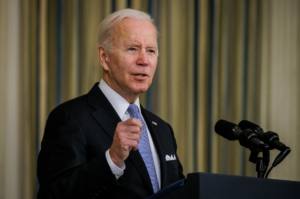Floridians fare slightly better than most Americans struggling to pay energy bills
3 min read
Prior to prices at the pump hitting record levels, roughly one quarter of Americans were already struggling to pay rising energy costs, according to an analysis published by HelpAdvisor.
Floridians fared slightly better than the national average according to the analysis, with 16.9%, or nearly 3 million people, unable to pay their home energy bill at least once in the past year.
Another 14.3% kept their home or apartment at an unsafe or unhealthy temperature to lower their energy bill, compared to the national average of 16%, according to the report.
However, with the rising cost of inflation, 26.1% of Floridians, slightly more than the national average, went without purchasing food or medicine in order to pay their energy bill, or 4.4 million people, the analysis found.
“As home energy prices continue to soar, I believe we will see an increase in the number of Florida households who are food insecure and can’t afford their prescription medication. Our report certainly suggests that,” the study’s author, Christian Worstell, told The Center Square.
“You must remember that many of those surveyed have children,” he added. “The price of home energy isn’t just impacting adults, it’s also impacting American children. They’re missing meals and needed medication because their parents need to budget for these costly energy bills.”
The findings come at a time when the U.S. Energy Information Administration (EIA) forecast last fall that U.S. households would spend more money on heating costs and consume more energy to keep their homes warm. In its Winter Fuels Outlook, EIA forecast that U.S. households would spend 54% more for propane, 43% more for heating oil, 30% more for natural gas, and 6% more for electric heating.
Coupled with Russia’s invasion of Ukraine and President Joe Biden’s energy policies, crude supply is restricted, demand has increased, and costs are skyrocketing.
Last November, Gov. Ron DeSantis took proactive measures and proposed a series of tax cuts, including cutting state gas and fuel taxes by $1 billion. He also proposed a series of tax cuts and tax holidays to reduce costs for Floridians.
In addition to the tax cut, DeSantis called on fuel stations to cut prices by 25 cents a gallon.
DeSantis said he was concerned that an increase in salaries and wages wouldn’t be enough to cover the rising costs of goods due to record inflation, blaming it on Biden’s economic policies that started hitting Americans wallets last year.
“Even if you start making more money, if the prices [for goods and fuel] are going up faster than your wages or salary, you’re actually losing money in this inflationary economy,” he said in November when announcing the proposed tax cuts.
Since then, inflation and energy costs have only gotten worse.
The national average price for a gallon of regular gasoline at the time was $3.41. Four months later, it’s $4.318 as of March 10, with Florida’s average slightly higher at $4.346. With the legislature still in session and the tax packages not having been passed yet, Floridians won’t see relief for a few months.
In the meantime, HelpAdvisor has listed available resources to help those struggling to pay their energy bills. It also notes, “Many energy companies offer their own assistance programs to customers, so be sure to contact your provider for information about any programs they may offer.”
Federally funded programs available include those offered through the Low Income Home Energy Assistance Program (LIHEAP), the U.S. Department of the Treasury, local Housing and Urban Development offices, and the U.S. Consumer Financial Protection Bureau.
The federally funded Temporary Assistance for Needy Families is managed by each state and can also offer assistance with home energy costs and other expenses.
The Dollar Energy Fund, a non-profit organization, and the Consumers Affordable Resource for Energy, a 24-month affordable payment plan, also offer assistance.
Other resources are available through state, county and community organizations by zip code.
This article was originally posted on Floridians fare slightly better than most Americans struggling to pay energy bills





